How to Keep Solar Lights from Falling Over
Solar lights are a sustainable and attractive addition to outdoor spaces, illuminating pathways, gardens, and driveways without increasing energy costs. However, a common issue faced by users is that these lights can tip over or fall, especially in windy conditions or soft soil. Understanding how to keep solar lights from falling over is essential for maintaining their functionality, aesthetics, and longevity. This article explores the reasons why solar-powered lights fall over, offers practical solutions to secure them, and provides tips to enhance the stability of your solar lighting system.
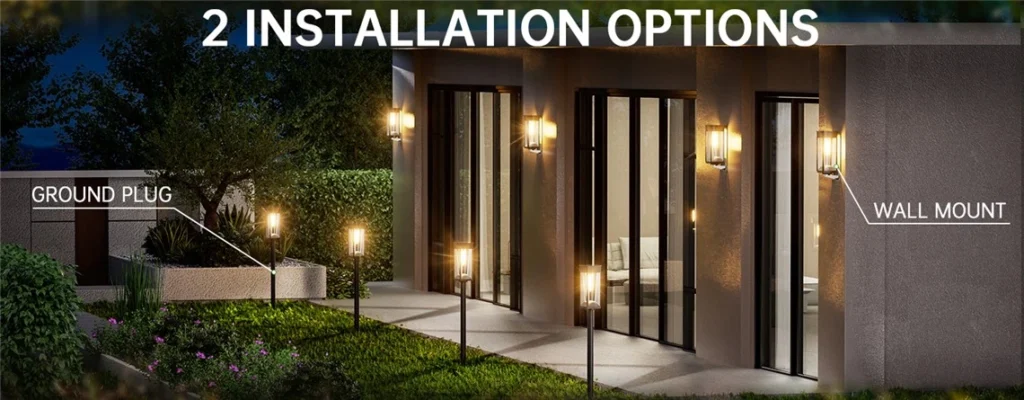
Why Do Solar Lights Fall Over?
Before diving into solutions, it’s helpful to understand why solar lights may become unstable:
- Soft or Unstable Soil: Loose, sandy, or wet soil can weaken the grip of stakes, causing lights to tilt or fall.
- High Winds or Weather: Strong winds, storms, or heavy rain can dislodge solar pathway lights, especially in exposed areas.
- Poor Design or Quality: Low-quality lights may have flimsy stakes or lightweight bases that lack stability. Brands like Bitpott emphasize sturdy designs, but even high-quality lights can face challenges in harsh conditions.
- Improper Installation: Incorrectly inserted stakes or lights placed in uneven terrain can lead to instability.
- External Interference: Pets, lawnmowers, or foot traffic can knock over solar lights, particularly those in high-traffic areas.
By addressing these factors, you can ensure your solar lights remain upright and functional.
Solutions to Keep Solar Lights from Falling Over
Here are practical methods to enhance the stability of your solar pathway lights, tailored to different environments and light designs.
1. Choose the Right Location
The placement of solar lights significantly impacts their stability. Selecting a suitable location minimizes the risk of tipping and ensures optimal solar panel efficiency.
- Avoid Loose Soil: Install lights in firm, compacted soil rather than loose or sandy areas. If the soil is soft, consider compacting it or adding a layer of gravel before installation.
- Minimize Wind Exposure: Place lights in sheltered areas, such as near fences or shrubs, to reduce the impact of strong winds.
- Ensure Level Ground: Install lights on flat surfaces to prevent tilting. For uneven terrain, use a small shovel to level the ground before inserting stakes.
Tip: Test the soil by pressing the stake in by hand. If it feels loose, choose a different spot or reinforce the area with gravel or a concrete base.
2. Use Sturdy Stakes or Mounts
Most solar pathway lights come with plastic or metal stakes designed to anchor them into the ground. However, these stakes may not be sufficient in challenging conditions.
- Upgrade to Metal Stakes: Replace plastic stakes with durable metal ones, which offer better resistance to bending or breaking. Some Bitpott models include reinforced stakes for added stability.
- Extend Stake Length: Use longer stakes (8-12 inches) for deeper ground penetration, especially in soft or sandy soil. Longer stakes provide a stronger anchor against wind and movement.
- Add Stabilizing Fins: Some aftermarket stakes have fins or barbs that increase grip in the soil, reducing the chance of tipping.
Tip: If replacing stakes, ensure they are compatible with your light’s design to avoid damaging the housing or wiring.
3. Install a Concrete or Brick Base
for areas with consistently loose soil or high winds, mounting solar lights on a solid base can provide unmatched stability.
- Concrete Base: Pour a small concrete pad (6-8 inches wide) and embed the light’s stake or a mounting bracket into it while wet. This creates a permanent, wind-resistant anchor.
- Brick or Paver Mount: Attach lights to bricks or pavers using adhesive or mounting brackets. Place the paver on the ground or bury it slightly for a low-profile, stable base.
- Screw-in Mounts: Use ground screws or auger-style mounts that twist into the soil, offering a secure foundation for the light.
Tip: Ensure the base doesn’t block the solar panel sunlight exposure, as this could reduce charging efficiency.
4. Use Weighted Bases for Surface-Mounted Lights
For solar lights designed to sit on the ground rather than be staked, a weighted base can prevent tipping.
- Add Sand or Gravel: Fill the base of the light (if hollow) with sand, gravel, or small stones to increase its weight and stability.
- Use Adhesive Weights: Attach adhesive-backed weights (available at hardware stores) to the underside of the base for added stability without altering the light’s appearance.
- Anchor with Stakes: Some surface-mounted lights, like certain Bitpott designs, allow for optional stakes or screws to secure them to the ground.
Tip: Check that added weight doesn’t interfere with the light-dependent resistor (LDR) or the light’s ability to pivot or adjust.
5. Secure with Guy Wires or Tethers
For taller or top-heavy solar lights, such as post or lantern-style models, guy wires or tethers can provide additional stability.
- Install Guy Wires: Attach thin, weather-resistant wires or cables from the light’s pole to small stakes driven into the ground, forming a tripod-like support system.
- Use Tether Clips: Clip-on tethers can anchor the light to nearby structures, such as fences or posts, without compromising aesthetics.
- Check Tension: Ensure wires are taut but not overly tight to avoid stressing the light’s structure.
Tip: Use UV-resistant or stainless-steel wires to prevent degradation in outdoor conditions.
6. Protect Against External Interference
External factors like pets, lawn equipment, or foot traffic can dislodge solar pathway lights. Protective measures can minimize these risks.
- Install Protective Barriers: Place small fences, rocks, or plants around lights to shield them from accidental bumps.
- Choose Low-Profile Lights: Opt for low-profile solar lights that are less likely to be knocked over by lawnmowers or foot traffic.
- Mark High-Traffic Areas: Use reflective tape or markers to make lights more visible, reducing the chance of collisions.
Tip: Regularly inspect lights for signs of disturbance, especially after lawn maintenance or heavy foot traffic.
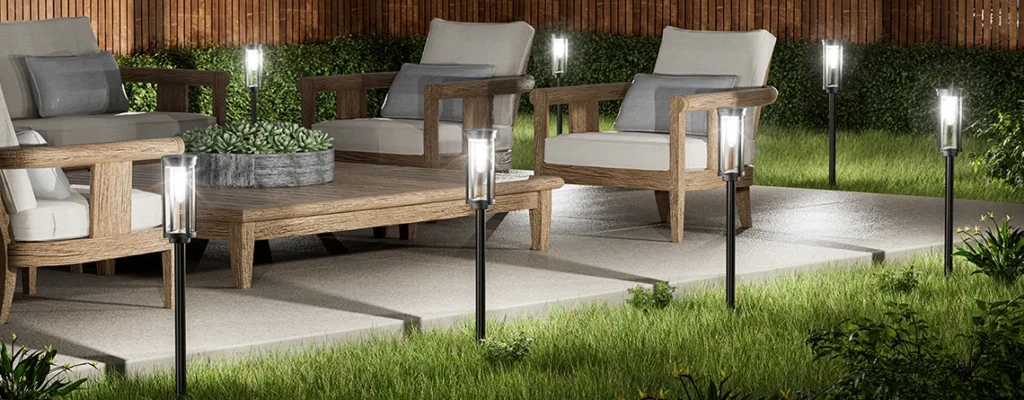
Additional Tips for Maintaining Solar Light Stability
To ensure long-term stability and solar light performance, incorporate these practices:
- Regular Maintenance: Check stakes and bases periodically for looseness or damage, especially after storms. Tighten or replace as needed.
- Optimize Solar Panel Placement: Ensure the PV panel receives 6-8 hours of direct sunlight daily to maintain solar panel efficiency. A poorly charged NiMH battery can lead to dim lights, making stability issues more noticeable.
- Clean Panels: Dust or debris on the PV panel can reduce solar energy collection. Clean panels monthly with a soft cloth to maximize charging.
- Test LDR Functionality: Ensure the light-dependent resistor (LDR) is free from obstructions and not exposed to artificial light at night, which can cause flickering or battery drain.
- Choose Quality Lights: Invest in high-quality solar lights from trusted brands like Bitpott, which often feature robust stakes, durable materials, and weather-resistant designs.
Troubleshooting Stability Issues
If your solar lights continue to fall over despite these measures, consider the following:
- Inspect Soil Conditions: Dig around the base to check for loose or eroded soil. Add gravel or a concrete base if the soil remains unstable.
- Check Stake Integrity: Examine stakes for cracks or bends. Replace damaged stakes with stronger, longer alternatives.
- Evaluate Light Design: Some budget lights have inherently weak designs. Consider upgrading to models with reinforced bases or adjustable mounts.
- Assess Environmental Factors: If high winds are a recurring issue, relocate lights to a more sheltered area or use guy wires for added support.
Benefits of Stable Solar Pathway Lights
Keeping solar pathway lights secure offers several advantages:
- Enhanced Safety: Stable lights ensure consistent illumination, reducing tripping hazards on walkways or driveways.
- Improved Aesthetics: Upright lights maintain a polished, professional look, enhancing your outdoor space’s curb appeal.
- Longer Lifespan: Preventing falls reduces the risk of damage to the PV panel, NiMH battery, or LDR sensor, extending the light’s lifespan.
- Cost Efficiency: Stable solar-powered lights require less frequent replacement or repair, maximizing your investment.
When to Consider Alternative Solutions
If stability issues persist despite these efforts, alternative lighting options may be more practical:
- Wall-Mounted Solar Lights: For areas with unstable soil, mount solar lights on walls, fences, or posts to eliminate ground-based issues.
- Hybrid Solar-Electric Lights: These combine solar and electric power, offering reliability in challenging environments while maintaining eco-friendliness.
- Electric LED Lights: In high-wind or high-traffic areas, energy-efficient electric LEDs with permanent mounts may provide better stability.
Conclusion
Ensuring how to keep solar lights from falling over involves selecting the right location, using sturdy stakes or bases, and protecting against environmental and external factors. By implementing solutions like metal stakes, concrete bases, weighted bases, or guy wires, you can enhance the stability of your solar pathway lights. Regular maintenance, such as cleaning PV panels and checking NiMH battery health, further supports solar light performance. With careful planning and quality products from brands like Bitpott, your solar lighting system will remain upright, functional, and visually appealing, providing safe and sustainable illumination for your outdoor spaces.

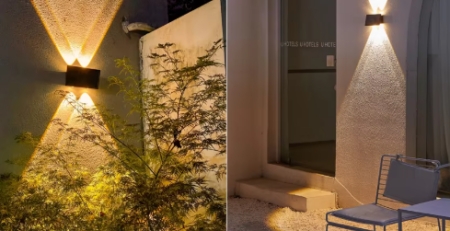

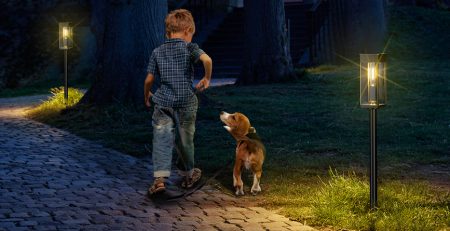
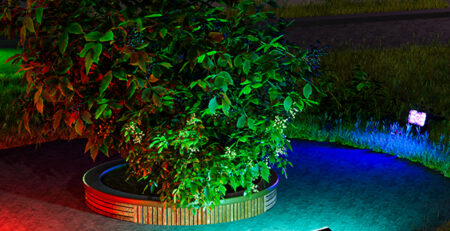
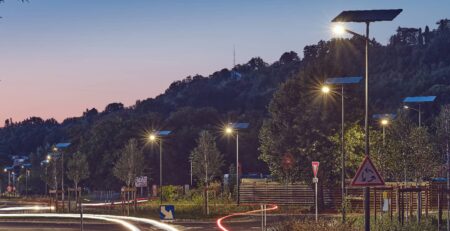
-3-450x231.webp)

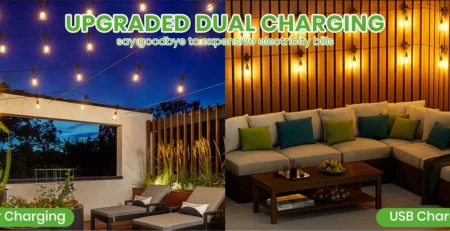
-4-450x231.webp)
-4-2-450x231.webp)
Leave a Reply